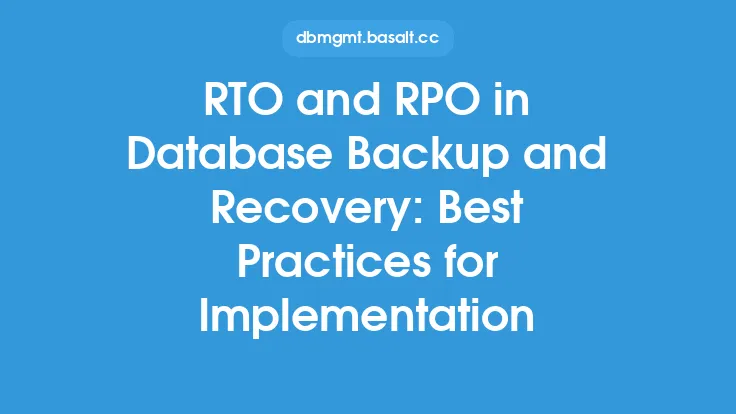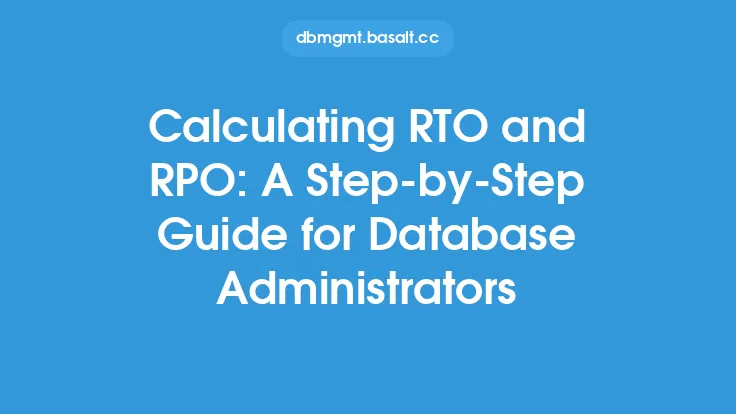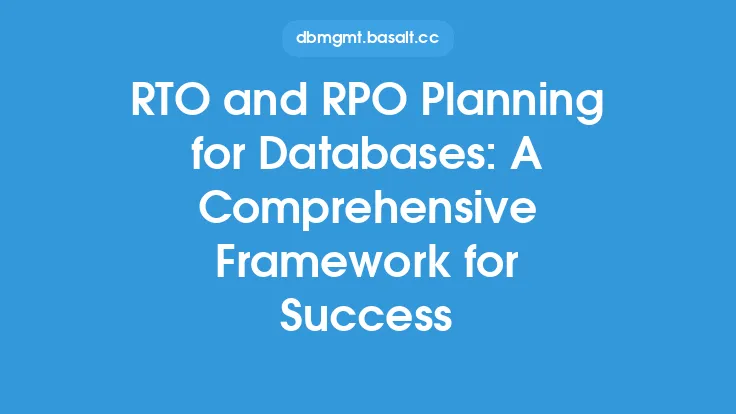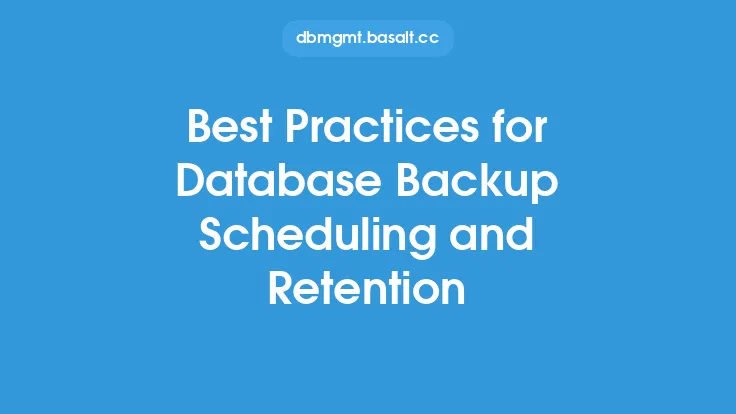When it comes to database backup and recovery, two crucial metrics that database administrators and organizations must consider are the Recovery Time Objective (RTO) and the Recovery Point Objective (RPO). These metrics are essential in determining the optimal balance between data protection, system availability, and business continuity. In this article, we will delve into the process of determining the optimal RTO and RPO for your database, exploring the factors that influence these metrics and providing guidance on how to strike a balance between them.
Understanding the Interplay Between RTO and RPO
RTO and RPO are closely related but distinct concepts. RTO refers to the maximum amount of time that an organization can tolerate being without access to its data or systems after a disaster or outage. It is essentially the time window within which the database must be restored to a functional state. On the other hand, RPO represents the maximum amount of data that can be lost in the event of a disaster or outage. It is the point in time to which the database can be restored, ensuring that no more than a specified amount of data is lost.
The interplay between RTO and RPO is critical. A lower RTO (faster recovery time) often requires more frequent backups, which in turn can lead to a lower RPO (less data loss). However, achieving a low RTO and RPO can be resource-intensive and may require significant investments in backup infrastructure, personnel, and processes. Conversely, a higher RTO and RPO may be more cost-effective but increase the risk of data loss and prolonged system downtime.
Factors Influencing RTO and RPO
Several factors influence the determination of optimal RTO and RPO for a database. These include:
- Business Requirements: The type of business, its dependence on the database, and the potential impact of data loss or system downtime on operations and revenue.
- Data Criticality: The importance and sensitivity of the data stored in the database. More critical data may require lower RTO and RPO.
- Regulatory Compliance: Certain industries are subject to regulations that dictate specific RTO and RPO standards, such as financial services or healthcare.
- Technical Capabilities: The capabilities of the database backup and recovery systems, including the speed of backup and restore processes, and the availability of resources such as storage and network bandwidth.
- Cost and Resource Constraints: The budget available for backup and recovery infrastructure, personnel, and processes, as well as the resources required to achieve desired RTO and RPO levels.
Assessing Current Capabilities and Needs
To determine optimal RTO and RPO, organizations must assess their current backup and recovery capabilities, as well as their business needs. This involves:
- Conducting a Business Impact Analysis (BIA): To understand the potential impact of data loss or system downtime on business operations and revenue.
- Evaluating Current Backup and Recovery Processes: Assessing the effectiveness, efficiency, and scalability of current backup and recovery systems.
- Identifying Data Dependencies and Criticality: Determining which data is most critical to business operations and requires the lowest RPO and RTO.
Setting RTO and RPO Targets
Based on the assessment of business needs and current capabilities, organizations can set realistic RTO and RPO targets. These targets should be specific, measurable, achievable, relevant, and time-bound (SMART). For example, an organization might set a target RTO of 4 hours and an RPO of 1 hour, meaning the database must be restored within 4 hours of an outage, with no more than 1 hour of data loss.
Implementing and Testing RTO and RPO Strategies
Once RTO and RPO targets are set, organizations must implement strategies to achieve them. This may involve:
- Upgrading Backup and Recovery Infrastructure: Investing in faster, more reliable backup and recovery systems.
- Implementing More Frequent Backups: Reducing the RPO by backing up data more frequently.
- Developing Disaster Recovery Plans: Creating detailed plans for responding to outages and disasters, including procedures for restoring systems and data.
- Regular Testing and Validation: Regularly testing backup and recovery processes to ensure they meet RTO and RPO targets and identifying areas for improvement.
Monitoring and Adjusting RTO and RPO
RTO and RPO are not static metrics; they can change over time due to shifts in business requirements, advancements in technology, or changes in regulatory environments. Organizations must continuously monitor their RTO and RPO, adjusting their targets and strategies as needed to ensure they remain aligned with business needs and technical capabilities.
Conclusion
Determining the optimal RTO and RPO for a database is a complex process that requires a deep understanding of business needs, technical capabilities, and the interplay between these two critical metrics. By assessing current capabilities and needs, setting realistic targets, implementing effective strategies, and continuously monitoring and adjusting RTO and RPO, organizations can achieve a balanced approach to database backup and recovery, ensuring both data protection and system availability. This balanced approach is essential for maintaining business continuity, minimizing the risk of data loss, and ensuring that database systems can recover quickly and efficiently from outages or disasters.





